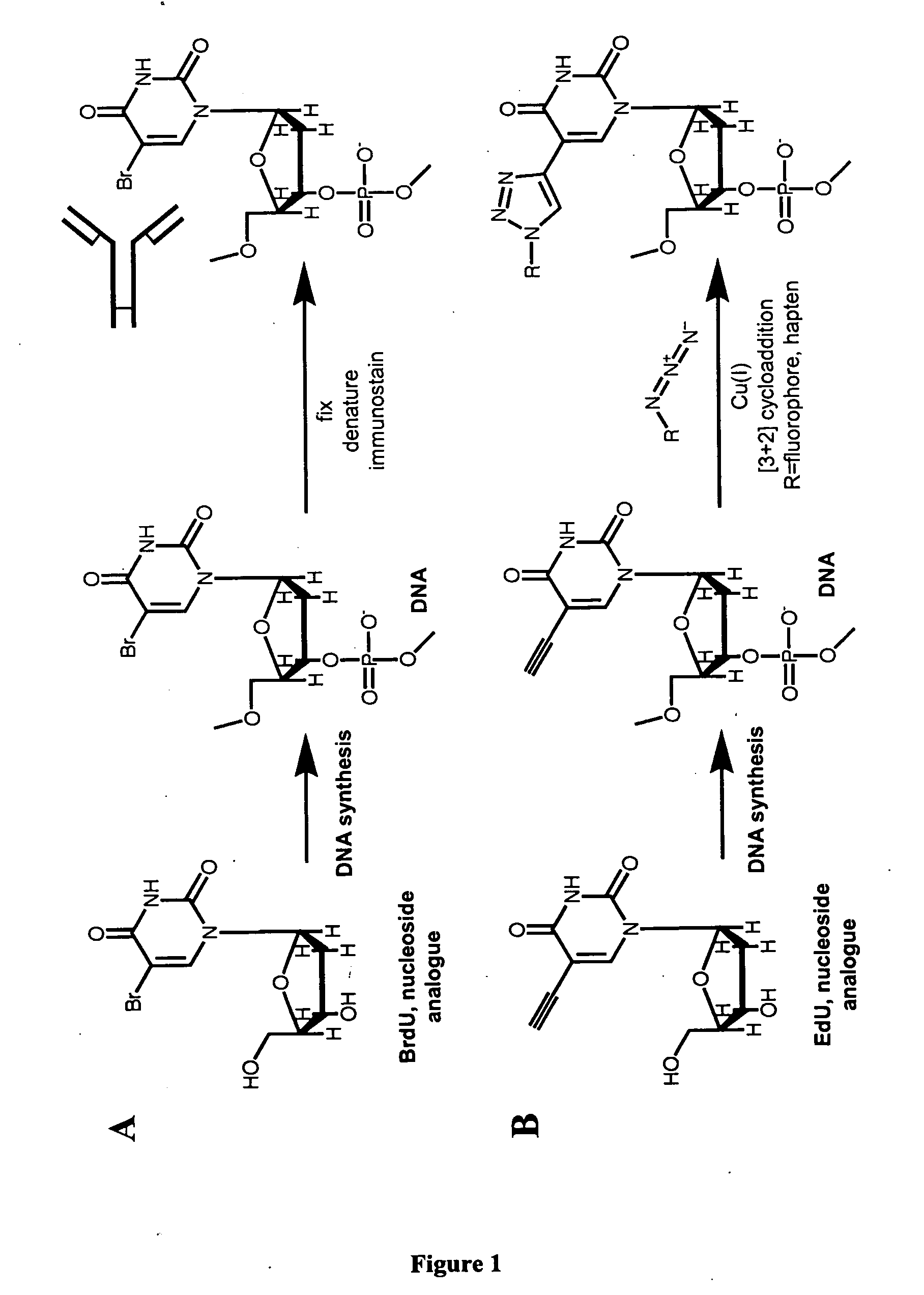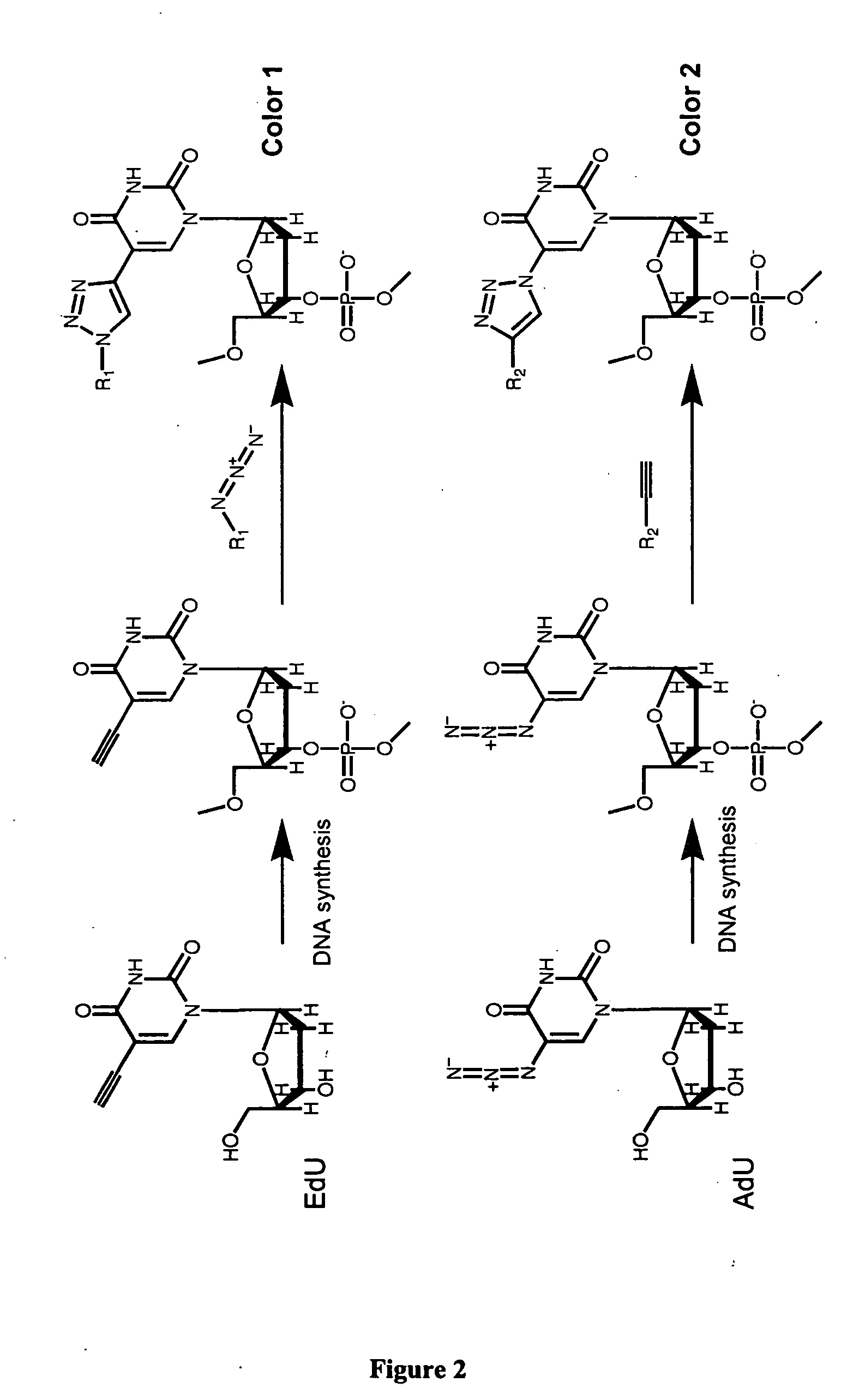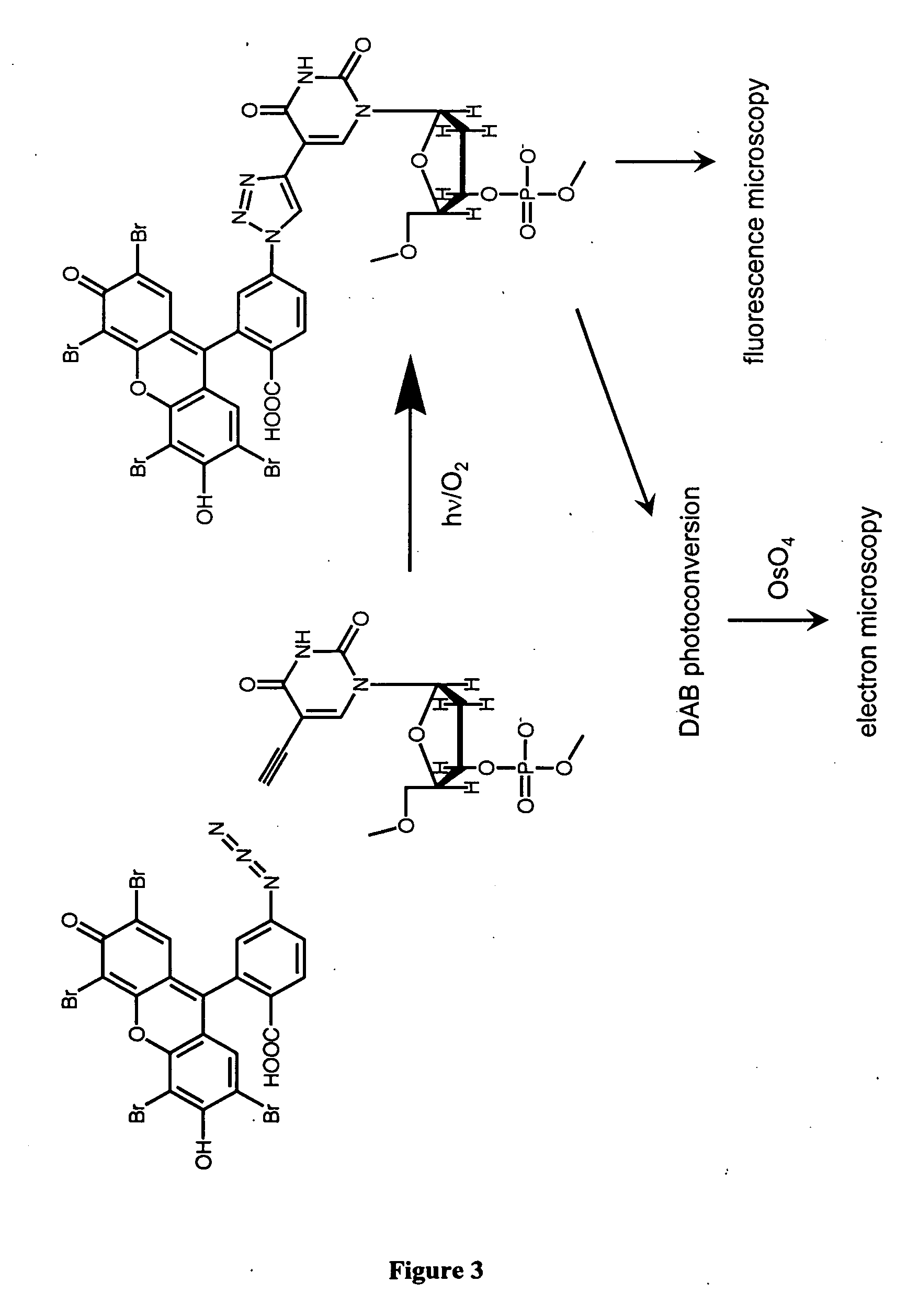Methods and compositions for labeling nucleic acids
a nucleic acid and composition technology, applied in the field of methods and compositions for labeling nucleic acids, can solve the problems of labor-intensive and time-consuming autoradiography, several limitations of the method, and the complications of using radioactivity
- Summary
- Abstract
- Description
- Claims
- Application Information
AI Technical Summary
Benefits of technology
Problems solved by technology
Method used
Image
Examples
example 1
General Protocols for Labeling of Cells with Ethynyl-dU
[0263] Ethynyl-dU (EdU) was used in tissue culture media (DMEM complemented with penicillin, streptomycin, and fetal calf serum (FCS)) ranging from 10 nM to 1 82 M depending on the length of the labeling pulse. For example, if cells to be labeled were synchronized in the S phase, 100 nM to 1 μM of EdU was used for 1 to 2 hours. After labeling, the cells were washed 3 or 4 times with PBS and then tissue culture media was added.
Staining of Living Cells:
[0264] Staining Solution: 100 mM Tris pH 8.5 (from 2 M stock in water), 0.5 to 1 mM CuSO4 (from 1 M stock in water), 0.5 to 1 μM TMR-propyl-azide (from approximately 100 mM stock in DMF), and water (as required) were mixed together. Ascorbic acid (from a 0.5 mM stock in water) was then added to this solution to a final concentration of 50 mM, and the resulting staining solution is mixed thoroughly.
[0265] For staining cells alive without permeabilization (e.g., when the staining...
example 2
Labeling of HeLa Cells with Ethynyl-dU
[0271] HeLa cells were labeled or not with 1 μM EdU as described in Example 1. They were then fixed / permeabilized and stained with an Xrhodamine-azide reagent (which is not cell permeable and therefore requires permeabilization in order to perform the click chemistry).
[0272] Images of both populations of cells (i.e., labeled or not with EdU) are presented on FIG. 5. A higher resolution view of these cells is presented in FIG. 11 (right), along with images obtained from EdU-labeled HeLa cells stained with OliGreen (FIG. 11 left). Note the speckled appearance of the EdU stain in the bottom cell which is undergoing anaphase. The speckles are due to the fact that the labeling pulse of EdU was shorter than the time required for the cell to replicate its DNA; thus only the DNA replicating during the pulse was labeled.
example 3
Time-Lapse Fluorescence Imaging of Labeled Live Cells
[0273] To stain DNA under conditions as close to the native state as possible, a cell-permeable TMR-azide reagent was developed. TMR-propyl-azide was synthesized by first reacting TMR-carboxy-NHS ester with 3-bromo-propylamine to form bromo-propyl-TMR. The latter compound was then reacted with sodium azide to form TMR-propyl-azide, which was found to be cell-permeable and thus suitable for labeling cells without the need for permeabilization and / or fixation.
[0274] To demonstrate staining of cells using TMR-propyl-azide, HeLa cells were first labeled with EdU. To facilitate live microscopic imaging, EdU-labeled cells were plated in coverslip chambers which were mounted on the heated stage (37° C.) of an inverted Nikon TE200)U microscope equipped for wide-field fluorescence microscopy as well as spinning-disk confocal fluorescence microscopy (Yokogama spinning disk confocal head from Perkin-Elmer). The media covering the cells was...
PUM
| Property | Measurement | Unit |
|---|---|---|
| Time | aaaaa | aaaaa |
| Fluorescence | aaaaa | aaaaa |
Abstract
Description
Claims
Application Information
 Login to View More
Login to View More - R&D
- Intellectual Property
- Life Sciences
- Materials
- Tech Scout
- Unparalleled Data Quality
- Higher Quality Content
- 60% Fewer Hallucinations
Browse by: Latest US Patents, China's latest patents, Technical Efficacy Thesaurus, Application Domain, Technology Topic, Popular Technical Reports.
© 2025 PatSnap. All rights reserved.Legal|Privacy policy|Modern Slavery Act Transparency Statement|Sitemap|About US| Contact US: help@patsnap.com



